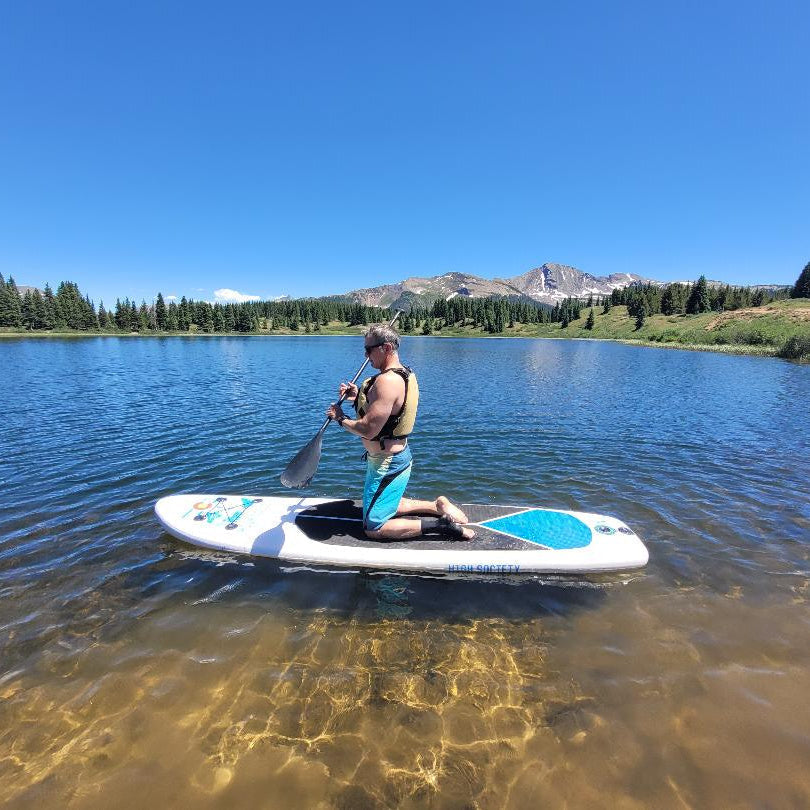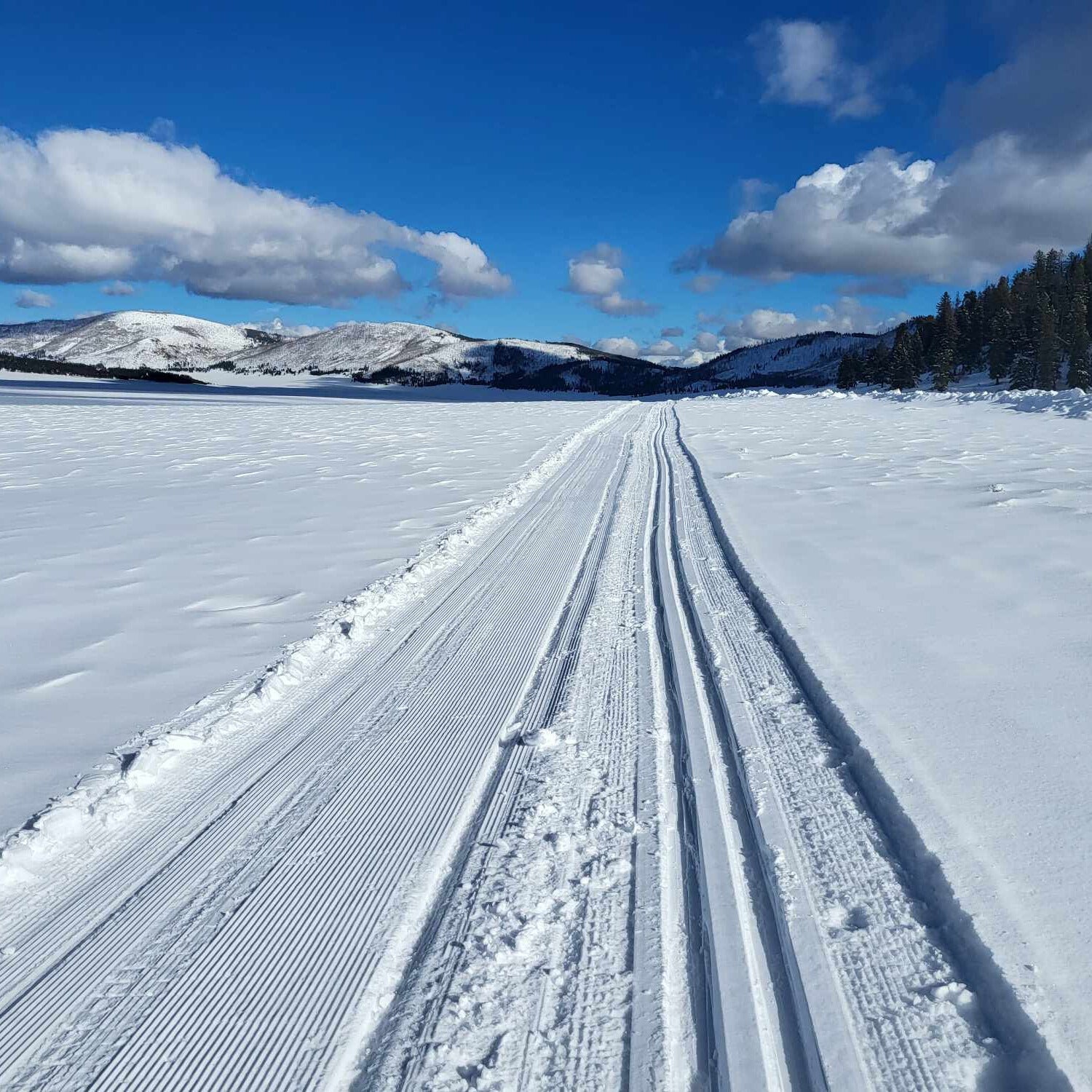Your Cart is Empty
accepting gear drop offs Mon-Sat 10am-5pm. No Consignment acceptance on Sundays.
accepting gear drop offs Mon-Sat 10am-5pm. No Consignment acceptance on Sundays.

Paddleboards make it easy and fun to get out on the water. They are inexpensive, small enough to put in a backpack, durable enough for expedition adventures, and all around fun. No wonder you see so many of them on Durango’s lakes and rivers.
But not all paddleboards are the same. Which paddleboard—AKA SUP, short for stand-up paddleboard—is best for you? And what should you look for when buying one? The pros atDurango’s best outdoor store, Durango Outdoor Exchange, are ready to help you have plenty on hand to sell this summer and can help you find the SUP of your dreams.
When purchasing a paddleboard, whether new or used, several key features are essential to consider so you are sure you get the right board for your needs and preferences. Here are some important features to look for:
1. Type of paddleboard:
All-around: Versatile boards suitable for various water conditions and activities, such as flatwater paddling, yoga, and light surfing.
Touring: Designed for longer distances and enhanced tracking, ideal for exploring lakes, rivers, and coastal waters.
Surf: Shorter and more maneuverable boards specifically crafted for surfing waves.
Inflatable vs. hardboard: Decide whether you prefer the convenience and portability of an inflatable paddleboard or the performance and rigidity of a traditional hardboard.
2. Length:
Longer boards (10 to 14 feet) offer better tracking and stability, making them suitable for touring and longer paddling trips.
Shorter boards (under 10 feet) are more maneuverable and better suited for surfing and recreational paddling.
3. Width:
Wider boards provide more stability, making them ideal for beginners, yoga, fishing, and paddling with pets or children.
Narrower boards offer increased speed and agility, and are more suitable for experienced paddlers and in situations where higher performance is needed.
4. Thickness:
Thicker boards offer more buoyancy and stability, particularly for heavier paddlers or those carrying extra gear.
Thinner boards are lighter and may provide better maneuverability.
5. Volume and weight capacity:
Consider your weight and what you plan to carry to ensure the board's weight capacity is sufficient.
Higher volume boards can support more weight and offer better stability.
6. Construction material:
Hardboards are typically made of fiberglass, carbon fiber, wood, or foam core, offering superior performance and durability but may be more expensive.
Inflatable boards are constructed from durable PVC materials and are lightweight, portable, and often more affordable.
7. Fin setup:
Single-fin setups offer better tracking and stability, which is ideal for touring and flatwater paddling.
Multiple-fin setups (thruster or quad) provide enhanced maneuverability and are suitable for surfing and navigating shallow waters.
8. Deck pad and accessories:
Look for a comfortable and grippy deck pad that provides traction and stability while paddling.
Consider additional features such as bungee cords, D-rings, and cargo areas for securing gear and accessories like water bottles, coolers, and fishing gear.
Buying a used paddleboard can be a great way to save money and still get on the water, but make sure you play it safe and make a wise investment. The SUP experts atDurango Outdoor Exchange can help. Here are some factors to consider when buying a used paddleboard:
1. Condition: Carefully inspect the paddleboard for any signs of damage, such as cracks, dents, or repairs. Pay particular attention to the board's hull, rails, and fin box. Minor cosmetic imperfections are fine; structural damage isn’t.
2. Age and usage: Older boards or those that have seen heavy use may be more prone to wear and deterioration. If possible, try to get a sense of the board's history, including where and how it was used, to assess its overall condition.
3. Accessories: Remember you’ll need more than just the board. Look for paddles, pumps, leashes, fins, and storage bags. Assess the condition of these accessories and whether they are compatible with the paddleboard.
There are several fantastic spots nearby where you can get on the water:
1. Animas River: The Animas River runs right through Durango, making it a convenient and scenic spot for paddleboarding. While sections of the river may have rapids unsuitable for paddleboarding, there are calmer stretches where you can enjoy a leisurely paddle. A good put-in is at Oxbow Park.
2. Vallecito Lake: Located about 18 miles northeast of Durango, Vallecito Lake is a beautiful mountain lake surrounded by the San Juan National Forest. The lake offers ample opportunities for paddleboarding.
3. Lemon Reservoir: Situated approximately 15 miles northeast of Durango, Lemon is another popular destination for paddleboarding. The reservoir offers pristine waters framed by towering pine forests and rugged peaks.
4. Navajo Lake: While a bit farther from Durango (about an hour's drive to the southwest), Navajo Lake is well worth the trip for paddleboarding enthusiasts. This expansive reservoir straddles the border between Colorado and New Mexico, offering miles of open water to explore. It’s like our own mini Powell.
5. Lake Nighthorse: Located just a few miles southwest of Durango, Lake Nighthorse is a relatively new reservoir. There’s an easy put-in and a nice place to hang out on shore. Get here early before the power boaters chop the water up. There’s a small entry fee.

Work crews were busy over the off season making changes to ski areas across the region. While the hoped-for new lifts at Purgatory aren’t going to spin, there are plenty of reasons for you toget some wax (or new skis) from Durango Outdoor Exchange and hit the slopes this winter.

Thanksgiving is almost here–and skiing this early is always a gamble. Here are some non-skiing warm(er) weather destination ideas for the long break.

Just a couple hours from Durango, Valles Caldera is a great cross-country skiing destination, with surprisingly good snow and very few visitors.
Valles Caldera National Preserve is a popular hiking destination in the summer and a surprisingly great skiing destination in the winter.